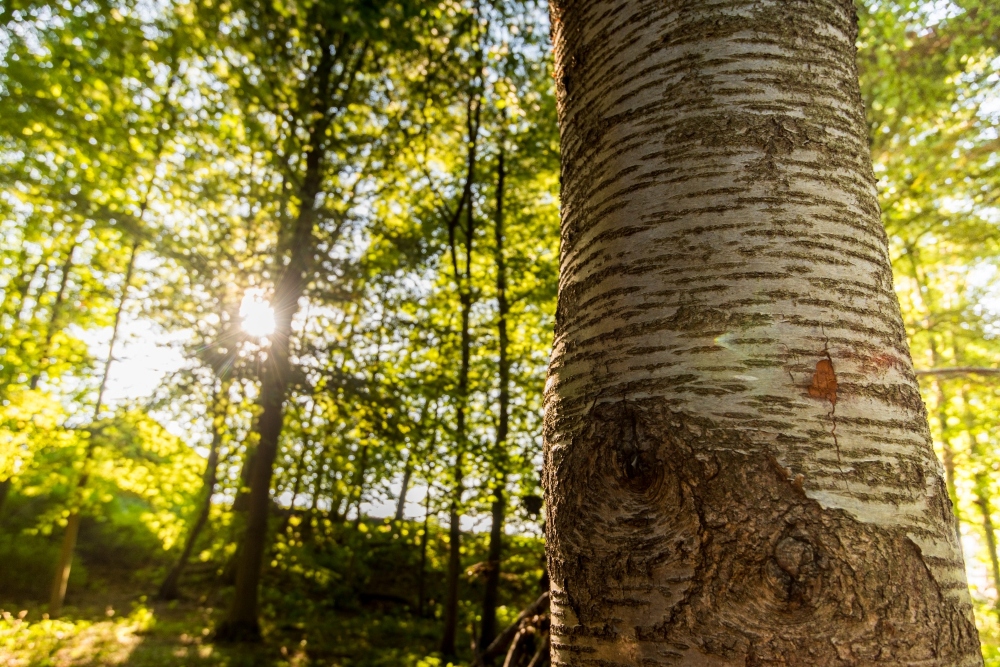by Michael Smith (Veshengro)
All we keep hearing is that we should be planting trees to mitigate climate change but what first and foremost is needed is proper woodland management of the already existing woodlands, and not just of those in the UK.
Simply planting trees is going to do nothing. They will not just grow and thrive by themselves even though that seems to be the thinking of those who advocate planting more or less over management.
I have, literally, had self-proclaimed experts who have just read the books that suit them and their beliefs tell me that woods do not need management and that Nature will do it all herself. Yes, I am sure we have all seen Nature's gardening.
Natural regeneration in woodlands is something different to man-made woods, that is to say planted areas that are often plowed or such which then gives weeds, brambles and other such species a great chance to thrive and brambles especially, without the intervention of man, will soon take over, smothering the young trees, and I do not even want to talk about damage by animals, from small rodents, to squirrels and to larger animals, such as deer, in all sizes.
Before, however, we advocate the planting of more and more trees, often species not suited for a particular area, because the people deciding to do so know no better but think that they do, we need to go and manage our existing woodlands properly once again and here especially renovate the overstood coppice woods and bring them back into management. The same goes for the many thousands, probably, of hectares of unmanaged woods up and down the country, and that is just in the UK. Then, and only then, should the planting of new trees at a large(r) scale come into consideration.
However, those advocating the planting of more and more trees, more or less willy-nilly, are often of the misconception that just sticking those whips into the ground is enough and Nature will do the rest. Sorry, we have been here before only a paragraph or so back, I know, but just planting and forgetting does not work.
It requires as much management, if not more, than managing old woodlands. In fact, the management of old woodlands is, to a great extent, easier and less labor intensive than the management of newly planted woodlands, as the trees are already established ones.
So, let us first of all, concentrate on the proper management of our existing woodlands and restore them to working, worked and productive woodlands before we run amok planting trees everywhere, often the wrong trees in the wrong places and forgetting about them. And many of the so-called tree planting schemes do end up as “stick in and forget” operations and that does no good at all.
Our woods all were once worked for products and the wildlife, nevertheless or maybe actually because of it, thrived. Very little debris was left laying around on the woodland floor, most of it ended up as firewood, and that which was no good for that use was burned on site, but still we had creepy crawlies, insects, and everything else in profusion. Could it be actually that the modern practices, and especially the use of harvesters, have caused us the problems that we are told our woodlands have? Combined, I should think, with the lack of proper management of most of the smaller and difficult accessible woods as far as heavy machines are concerned.
In addition to that the bottom fell out of the market for home-produced smaller scale wooden products because capitalism made it thus. Instead of home-produced wooden utensils for kitchen, etc., and woven baskets, cheaper imports were sourced from Asian countries and much of it was then also replaced, as far as basket ware, for instance, is concerned, by plastic, once again cheap from Asian countries. But at what cost to the environments, our woods and the woodland workers?
We need to go back to the future, so to speak. In other words we need to get back to managing our woods the way we once used to, though not necessarily only by use of axe, billhook and handsaw.
© 2022





















